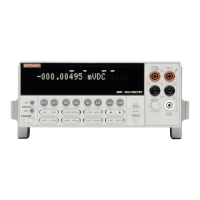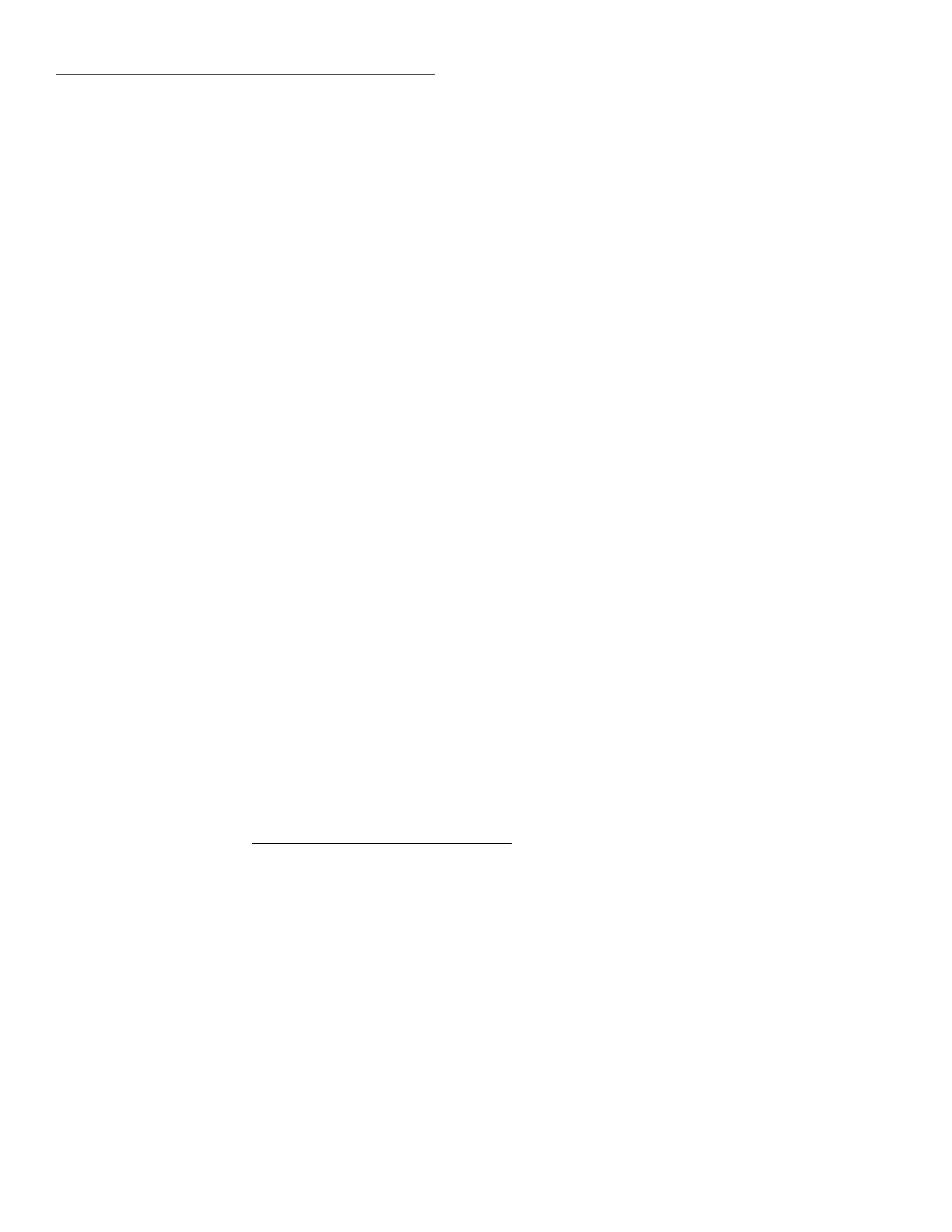IEEE-488 Reference
4-70
Line 10 Sets the upper limit of LIMIT 1 to 10, and then queries the programmed limit.
Line 20 Addresses the Model 2001 to talk.
Line 30 Displays the upper limit of LIMIT 1 (10).
:SOURce <NRf>
:CALCulate3:LIMit[1]:UPPer:SOURce <NRf> Specify pattern; upper LIMIT 1 failure
:CALCulate3:LIMit[1]:LOWer:SOURce <NRf> Specify pattern; lower LIMIT 1 failure
:CALCulate3:LIMit2:UPPer:SOURce <NRf> Specify pattern; upper LIMIT 2 failure
:CALCulate3:LIMit2:LOWer:SOURce <NRf> Specify pattern; lower LIMIT 2 failure
Parameter
<NRf> = 0 to 15 Specify digital pattern for output port
Formats
:calc3:lim:upp:sour <NRf>
:calc3:lim:low:sour <NRf>
:calc3:lim2:upp:sour <NRf>
:calc3:lim2:low:sour <NRf>
Defaults
Power-up Saved power-on setup
*RST 0
:SYSTem:PRESet 0
Query
:SOURce? Query source value for specified limit
Short-form formats: :calc3:lim:upp:sour?
:calc3:lim:low:sour?
:calc3:lim2:upp:sour?
:calc3:lim2:low:sour?
Response message: 0 to 15
Description
These commands are used to specify which line(s) of the Digital Output Port will go true when
a limit test failure occurs. The first failure in the test sequence determines the digital output pat-
tern. Subsequent failures in the test sequence will not change the digital output pattern on the
output port.
Each output line is assigned a decimal weight as follows:
Digital Output Decimal Weight
Line #1 1
Line #2 2
Line #3 4
Line #4 8
The parameter value for the digital pattern is determined by adding the decimal weights of the
desired output lines. For example, if you want output lines #2 and #3 to go true when the upper
limit of LIMIT 1 is the first failure in the test sequence, use a parameter value of 6 (2+4) as
follows:
:calc3:lim:upp:sour 6
The actual true state (high or low) of each Digital Output line depends on its programmed po-
larity. If programmed for active-high polarity, the output line will go high (true) when the upper

